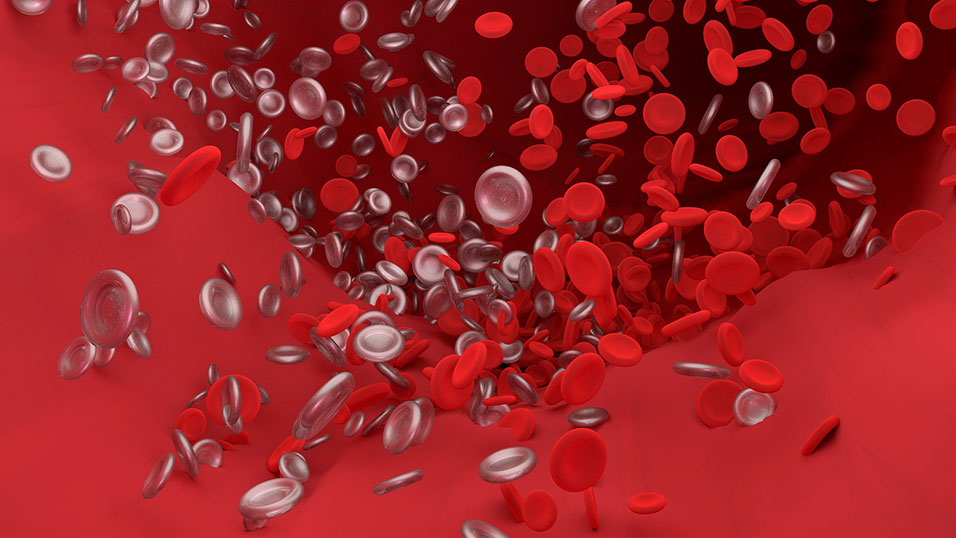SAN DIEGO, CA.- While respiratory issues continue to be the most common symptom of a COVID-19 infection, new research indicates the disease could also be associated with hypercoagulability, or increased tendency of the blood to clot. In a new study published November 20, 2020 in the journal EClinical Medicine by The Lancet, researchers from
UC San Diego Health found that blood clots led to an increased risk of death by 74 percent.
Led by Mahmoud Malas, MD, division chief of Vascular and Endovascular Surgery at UC San Diego Health, researchers reviewed 42 different studies involving more than 8,000 patients diagnosed with COVID-19. Using random models, the team produced summary rates and odds ratios of mortality in COVID-19 patients with thromboembolism, blood clots — and compared them to patients without these conditions to determine what effect blood clots may have on risk of death.
“We began to notice a really unusual manifestation of venous and arterial thromboembolism in patients with COVID-19,” said Malas. “In addition to higher instances of blood clots, the mortality for patients hospitalized for COVID-19 and with thromboembolism was much higher, compared to patients without clots. It’s unusual because we have never seen anything like this with other respiratory infections.”
Overall, 20 percent of the COVID-19 patients were found to have blood clots in the veins, and among patients in the intensive care unit, that statistic increased to 31 percent.
Blood clots in the vein, or deep vein thrombosis, can reach the lungs and develop into pulmonary embolism, resulting in higher risk of death. Blood clots in the arteries may lead to limb amputation if not treated surgically in a timely fashion.
In the study, Malas and colleagues performed a systemic review through meta-analysis, which is a statistical method that allowed researchers to combine multiple studies to produce a single comprehensive paper.
“The collective experience in the literature as captured in this meta-analysis study brings additional light on the importance of blood vessel clotting events in hospitalized patients with COVID-19,” said Bryan Clary, MD, surgeon-in-chief at UC San Diego Health and co-author of the study. “While the frequency of these events is much higher than expected, our study likely underestimates the incidence of thromboembolism in the global population of patients with COVID-19, including non-hospitalized patients.”
According to Malas, arterial blood clots developing in people with the flu is extremely rare, and the rate of clotting in patients with COVID-19 is higher than what is reported for other viral pandemics, including the H1N1 influenza of 2009.
Similar symptoms are shared between influenza and SARS-CoV-2, such as fever, cough, shortness of breath, or fatigue. Blood clotting can occur in patients hospitalized with the flu, but only in veins. For patients with COVID-19, blood clots can appear in either veins or arteries.
Typically, clotting in the arteries is caused by health factors, such as atrial fibrillation, high blood pressure, high cholesterol, diabetes, or lifestyle choices like smoking. Patients who are hospitalized for long periods of time are also more at risk for blood clots in the vein due to immobility.
Blood clots in the vein are treated or prevented with prescribed blood thinners. Proactively administering such medications to hospitalized patients can also help prevent clots from forming. Clinical trials are ongoing to determine how blood thinners can reduce the risk of clotting in patients with COVID-19.
“What we can learn from this paper is due diligence,” said Malas. “We’re still in the process of understanding the pathophysiology of COVID-19, so it’s important to have a low index of suspicion when it comes to this infection to ensure we’re doing all we can to mitigate the spread and prevent severe outcomes.”
Co-authors include: Isaac N. Naazie, MD, MPH, Nadin Elsayed, MD, Asma Mahlouthi, MD, and Rebecca Marmor, MD, all at UC San Diego.










